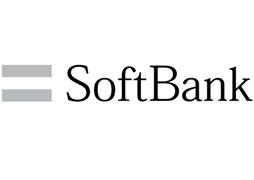SoftBank adopts Cisco network convergence system to optimise next-gen mobile IP core network operations

Cisco Systems G.K. has announced that SoftBank Corp. has adopted the Cisco Network Convergence System 5500 Series. This provides high-density 100GE routing and Segment Routing technology for optimising network operations for its next-generation mobile IP core network.
According to the recent Cisco Mobile Visual Networking Index Forecast (VNI) 2016-2021, global mobile data traffic will increase sevenfold to 1.4 zettabytes over the five years. The backdrop to this is believed to be the rapid increase of mobile users, smartphones and the Internet of Things (IoT), along with the rise in network speeds and the expansion of mobile video consumption. Furthermore, large-scale implementation of 5G infrastructure is forecast to begin around 2020.
Mobile carriers such as SoftBank not only need to respond to the demands of increasing users by obtaining the revolutionary communication speed and low latency, and dynamic provisioning capabilities realised through 5G networks, but also provide new services to mobile home and enterprise markets.
Support for future increases in mobile traffic
SoftBank had been considering upgrading and expanding its existing equipment housing mobile Internet traffic, to meet demand for mobile traffic capacity forecasted to increase at a rate of 50% per year.
It has upgraded core routers used in its existing network to the Cisco NCS 5500 Series, capable of housing 576 100GE ports. This enables the company to build a next-generation mobile IP core network supporting bandwidth demand for the deployment of new services such as IoT and mobile video.
Realisation of workload reduction in diversifying network operation

Yvette Kanouff
As the services required by the market become more diverse, network configurations and traffic patterns also become more complex. The reduction of manual work required for opening lines and management of convergence time and network topology has been indicated as one of network measures being taken.
SoftBank has become the first company in Japan to introduce Segment Routing technology advocated by Cisco. It simplifies and optimises the mobile IP core network and facilitates automation of network operations.
Toward provision of more reliable and redundant services to the market
The continuity of services is essential for remaining competitive in the market. This next-generation mobile IP core network supporting high-traffic volume also needs to reduce fault recovery time and improve functions for ensuring high reliability of services in the event a fault occurs.
To meet this requirement, SoftBank adopted Segment Routing TI-LFA capability to reduce fault recovery time while also improving reliability and redundancy. This will enable the provisioning of a more reliable mobile network while delivering a better customer experience to the company’s consumer and corporate users.
SoftBank is aiming to become more competitive in the market by enabling the rapid, flexible deployment of highly reliable services through the creation of a core network that supports traffic demand with low operating costs.
Keiichi Makizono, senior vice president of SoftBank Corp said: “SoftBank keeps focusing on improving service quality and enhancing the reliability and agility of network while reducing costs. Cisco’s advanced network technologies and support have allowed us to establish the next-generation mobile IP core network platform that meets the bandwidth demand. We expect Cisco’s continued support and cooperation for providing services that lead the Japanese market.”
 According to, SVP and general manager, Service Provider Business, Yvette Kanouff, Cisco: “Cisco’s groundbreaking cloud-scale network technologies, such as Cisco NCS 5516 and segment routing, help SoftBank build a highly-reliable, next-generation mobile IP core network featuring bandwidth capacity that supports the future mobile traffic increase with optimised low-cost operation. This enables SoftBank to bring to market the mobile experience and service that sets the new industry standard in the 5G/IoT era.”
According to, SVP and general manager, Service Provider Business, Yvette Kanouff, Cisco: “Cisco’s groundbreaking cloud-scale network technologies, such as Cisco NCS 5516 and segment routing, help SoftBank build a highly-reliable, next-generation mobile IP core network featuring bandwidth capacity that supports the future mobile traffic increase with optimised low-cost operation. This enables SoftBank to bring to market the mobile experience and service that sets the new industry standard in the 5G/IoT era.”
What is segment routing?
In order to increase the profitability of service providers in an environment where networks are becoming more complex and network traffic patterns are diversifying, it is necessary to simplify network architectures, to provide value-added services to customers and finely control traffic.
Segment routing enables the provisioning of advanced network services – such as low-latency and disjointedness – without increasing the burden on operations. Segment Routing architecture has been designed from the ground up to seek the right balance between distributed intelligence and centralised optimisation. It delivers a unified, end-to-end policy-aware network infrastructure while bringing unmatched simplicity and scalability.
Comment on this article below or via Twitter @IoTGN
